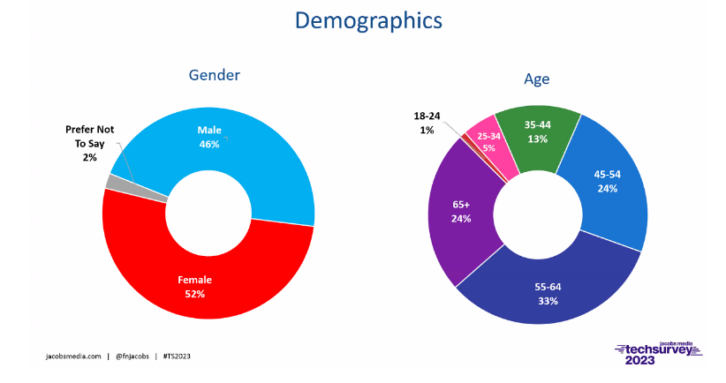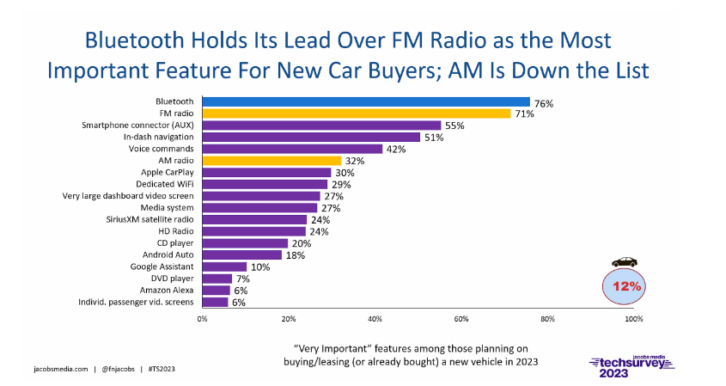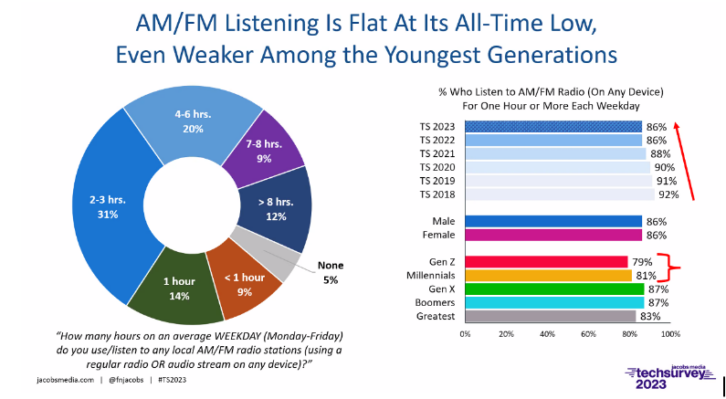
On Wednesday, Fred Jacobs of Jacobs Media presented the findings of the 19th annual Techsurvey. This year’s study, dubbed “Radio in the Post-Pandemic Era,” evaluated the current media and radio environment by examining listener behaviors and routines post-COVID.
The data set was compiled by 434 participating radio stations, yielding more than 30,000 surveys from “core radio listeners.” During the presentation Jacobs said it’s important to note that these respondents are not representative of all of commercial radio listeners, as the surveys were sent to those already part of a station’s email database. Survey responses were collected between Jan. 4 – Feb. 7 and used Nielsen’s 2022 market population data.

The findings highlighted several issues that are top of mind for radio professionals: listening habits in the car, and how the connected car continues to change the media landscape; the future of AM radio, and where the senior band ranks in popularity; how younger generations like Gen Z and Millennials are tuning in, if they are at all; and the impact of on-air talent as the industry faces budget cuts and layoffs.
At the beginning of his Techsurvey presentation, Jacobs noted several key findings that depict an industry in distress amidst rapid technological advances.
Per the information gathered from core radio listeners, media consumption patterns are returning to normal post-COVID and consumption is up; however, AM/FM radio listening flatlines, regular radios at home continue to disappear and Bluetooth holds its lead over FM radio as the “most important feature” for new car buyers.

Jacobs said AM/FM radio listening in the car continues to erode. He said this is especially true for young people, of which “a solid majority” of Millennials only consume digital audio or satellite in their vehicles.
“When you are driving a connected car, you are probably listening to less AM/FM radio as a result,” said Jacobs. “When we look at generations, you can come to see what we know to be true. The younger the respondent, the less likely that they will listen to the radio.”
Since 2018, the number of core radio listeners who listen to AM/FM radio for one or more hour each weekday has decreased by six percent.

It’s not all bad news, though. Smart speaker ownership ticks back up, which benefits stations; radio’s “connectivity” and “local-ness” hold strong; on-air personalities continue to draw in listeners; and stations’ mobile apps remain popular.
Radio World will continue to break down these findings in the coming days. Read Part 2 here.







